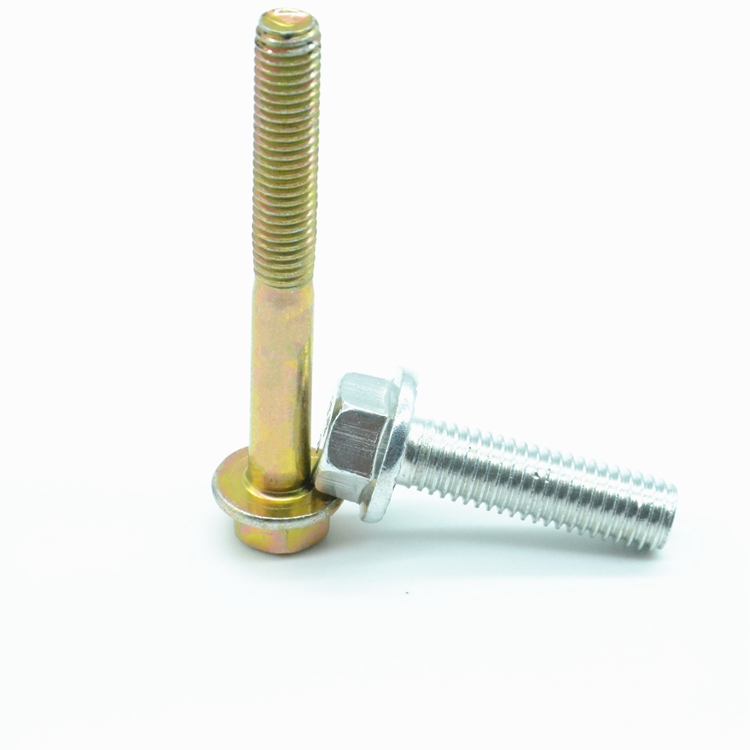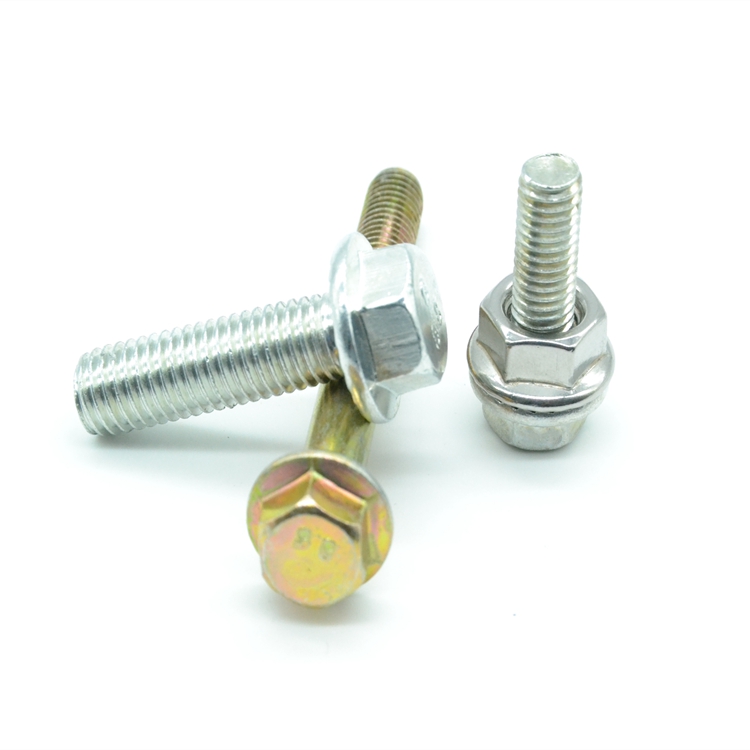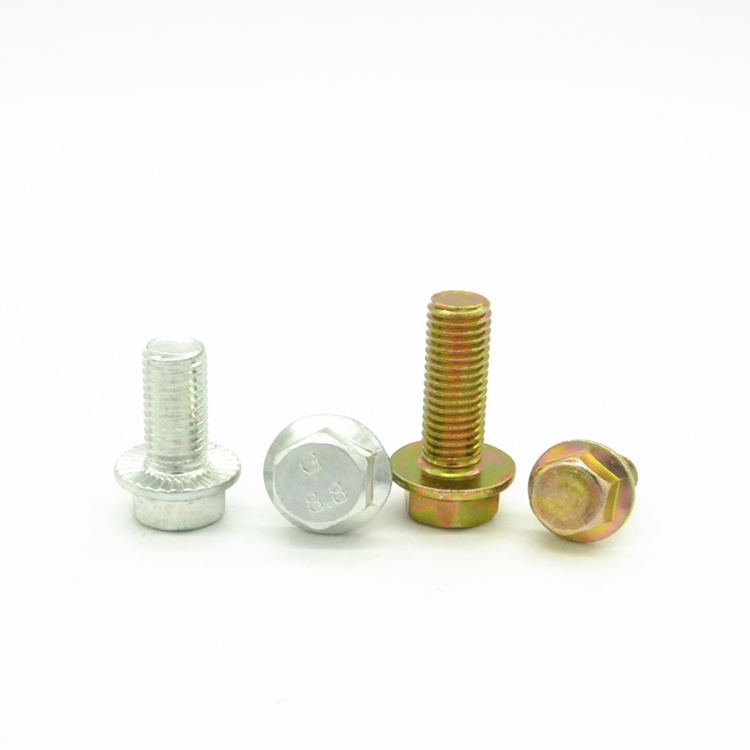Wire Bolts Suppliers & Manufacturer | Factory Direct Price
Aug . 06, 2025 02:20 Back to list
Wire Bolts Suppliers & Manufacturer | Factory Direct Price
In the vast and intricate world of industrial fasteners, selecting the right partner is paramount to ensuring project integrity, safety, and longevity. This guide delves deep into the critical aspects of sourcing from leading wire bolts suppliers. We will explore everything from market trends and technical specifications to advanced manufacturing processes and real-world applications. As a distinguished `wire bolts factory`, we aim to provide you with the expertise needed to make informed decisions, spotlighting our high-performance FLANGE HEAD BOLTS as a prime example of quality and innovation.
The global industrial fasteners market is projected to reach USD 110.92 billion by 2028, growing at a CAGR of 4.5%. This growth is driven by increasing demand from the automotive, construction, and renewable energy sectors. Within this landscape, specialized components like wire bolts are seeing heightened demand due to their unique strength-to-weight ratios and adaptability. Discerning buyers are no longer just looking for a `wire bolts exporter`; they are seeking a strategic partner—a `wire bolts company` that offers technical expertise, consistent quality, and reliable supply chains.
Understanding the Core Product: FLANGE HEAD BOLTS
Before comparing suppliers, it's crucial to understand the product. Flange head bolts, a specialty within the wire bolt category, are engineered with an integrated washer-like flange under the head. This design serves two primary functions: it distributes the clamping load over a wider surface area, reducing stress on the joined material, and it eliminates the need for a separate flat washer, simplifying assembly and inventory management. This makes them ideal for applications requiring high clamping force and vibration resistance.
Technical Specifications Overview: The Anatomy of Excellence
A proficient wire bolts suppliers must provide clear, detailed technical data. Below is a comprehensive table outlining the specifications for our premium FLANGE HEAD BOLTS.
| Parameter | Specification | Importance & Industry Relevance (Expertise) |
|---|---|---|
| Product Name | FLANGE HEAD BOLTS | Specific naming conventions (e.g., DIN 6921, ISO 4162) are critical for global sourcing and interoperability. |
| Material Options | Carbon Steel, Alloy Steel (e.g., 40Cr, 35CrMo), Stainless Steel (304, 316) | Material selection dictates strength, corrosion resistance, and temperature tolerance. Critical for petrochemical (316 SS) and structural (Alloy Steel) applications. |
| Strength Grade / Class | Class 8.8, 10.9, 12.9 (Metric); Grade 5, 8 (Imperial) | Defines the bolt's mechanical properties, including Tensile Strength and Yield Strength. Class 10.9 is a high-strength standard for demanding automotive and machinery applications. |
| Thread Standards | Metric (M6-M24), UNC/UNF (1/4" - 1") | Ensures compatibility with nuts and threaded holes. Conformance to ISO 261 (Metric) or ANSI/ASME B1.1 (Imperial) is a mark of a quality `wire bolts manufacturer`. |
| Surface Finishes | Plain, Zinc Plated (White, Yellow, Black), Hot Dip Galvanized (HDG), Dacromet | Provides corrosion protection. Zinc plating is standard, while HDG offers superior protection for outdoor/marine environments. Dacromet is a high-performance choice for corrosion and heat resistance. |
| Manufacturing Standards | ISO, DIN, ANSI/ASME, BS | Adherence to international standards guarantees dimensional accuracy, material quality, and performance consistency. For example, dimensional tolerances are governed by standards like ANSI B18.2.1. |
| Estimated Service Life | 15-50+ years (dependent on material, coating, and environment) | A key indicator of long-term value and reliability, crucial for infrastructure and capital equipment projects. |

The Manufacturing Journey: From Wire Rod to High-Integrity Fastener
The quality of a wire bolt is determined by a meticulous and controlled manufacturing process. As an experienced `wire bolts exporter`, YZ Fastener has perfected this journey. This process is far more advanced than simple casting; it relies on forging for superior grain structure and strength. Here’s a detailed breakdown of our process, a testament to our expertise as one of the premier wire bolts factories.
Visualized Manufacturing Flowchart
Annealing to soften material for forming.
Drawing to precise diameter; acid cleaning to remove scale.
Forming the head and flange shape without heat. Crucial for strength.
Forming threads by displacement, not cutting, which increases fatigue resistance.
Quenching and tempering to achieve target hardness and strength (e.g., Class 10.9).
Applying protective coatings like Zinc Plating or Dacromet.
Dimensional checks, torque tests, salt spray tests.
Expert Insight (Expertise): The key difference between Cold Heading and Casting lies in the material's grain structure. Cold Heading (Forging) realigns the steel's grain flow to follow the contour of the bolt head and flange. This continuous, unbroken grain structure results in significantly higher tensile and fatigue strength compared to casting, where the grain structure is random and contains potential voids.
Technical Advantages & Manufacturer Comparison
Not all wire bolts suppliers are created equal. The difference lies in process control, material science, and investment in technology. A top-tier `wire bolts company` like YZ Fastener delivers tangible advantages that translate into better performance and lower lifetime costs for the end-user. Let's compare our flange head bolts against a generic industry standard.
Key Advantages of YZ Fastener Flange Head Bolts:
- Enhanced Clamping Force: The integrated flange provides a larger bearing surface, allowing for higher pre-load torque without damaging the component surface. This is critical in applications like engine assembly or structural steel connections.
- Superior Fatigue Resistance: Our thread rolling process, as opposed to thread cutting, induces compressive residual stresses at the thread root, a known initiation point for fatigue cracks. This extends the service life in dynamic load environments, such as heavy machinery and vibrating equipment.
- Guaranteed Corrosion Protection: We offer advanced coatings like Dacromet and Geomet, which provide over 500-1000 hours of salt spray test resistance (ASTM B117). This far exceeds standard zinc plating and is vital for industries like marine, chemical processing, and coastal infrastructure. Our `zinc plated self drilling screws manufacturer` division also adheres to these high standards.
- Exceptional Dimensional Consistency: Utilizing multi-station cold formers and rigorous in-process quality control (SPC), we ensure tight tolerances on head height, flange diameter, and thread pitch, which is essential for automated assembly lines.

Data-Driven Performance Comparison
Visual data provides a clear picture of performance superiority. The charts below illustrate how YZ Fastener's Class 10.9 Flange Head Bolts compare to a generic Class 8.8 bolt and their typical applications across industries.
Performance Metrics: YZ Fastener (Class 10.9) vs. Generic (Class 8.8)
Flange Head Bolt Application Market Share
Customization and Tailored Solutions: Beyond the Standard Catalog
A truly capable wire bolts supplier doesn't just offer standard parts. They function as a solutions provider. At YZ Fastener, we have extensive experience (E-E-A-T: Experience) in developing custom fastening solutions for unique challenges. Our engineering team works directly with clients to specify:
- Custom Materials: Need fasteners for cryogenic applications or extreme high temperatures? We can source and work with specialized alloys like Inconel, Monel, or Titanium.
- Non-Standard Dimensions: We can manufacture bolts with custom lengths, thread pitches, or flange diameters to fit specific design constraints.
- Unique Head Markings: For traceability and branding, we can add custom markings to the bolt head, a requirement in many aerospace and military contracts.
- Specialized Coatings: Beyond standard platings, we can provide coatings like PTFE for anti-galling properties or specialized phosphate coatings for paint adhesion.
Application Case Study (Experience in Action)
Case Study: Securing a High-Pressure Flange in a Petrochemical Refinery
- Client: Major Middle Eastern Petrochemical Corporation.
- Challenge: Frequent failures of standard Grade 8 bolts on a critical pipeline flange due to a combination of high internal pressure, thermal cycling, and a mildly corrosive H2S environment. The failures led to costly downtime and safety risks.
- Our Solution: We collaborated with the client's engineering team. After analyzing the operating conditions, we recommended and manufactured custom M20 Flange Head Bolts (DIN 6921).
- Material: ASTM A193 Grade B7 Alloy Steel, selected for its high tensile strength at elevated temperatures.
- Coating: A dual-layer coating of Hot-Dip Galvanizing (for base corrosion protection) followed by a Xylan/PTFE topcoat (for chemical resistance and controlled friction).
- Design: The flange head design provided a more uniform pressure distribution on the gasket, ensuring a superior seal and preventing leaks under pressure fluctuations.
- Outcome (Trustworthiness): The new flange head bolts were installed during a scheduled shutdown. Over the subsequent 24 months of operation, there were zero recorded bolt failures or leaks at the joint. The client reported a 95% reduction in maintenance hours for that specific flange and a significant improvement in operational safety. This success led to YZ Fastener being specified as the preferred `wire bolts exporter` for their subsequent expansion project.

Building Trust and Authority: Why Choose YZ Fastener?
Choosing a supplier is a long-term commitment. We build trust not just through our products, but through our entire business ecosystem. This is what sets a true partner apart from a mere `zinc plated self drilling screws companies` or a standard `wire bolts supplier`.
Authoritativeness & Certifications
- ISO 9001:2015 Certified: Our quality management system is independently audited and certified, guaranteeing process control and product consistency.
- Adherence to Global Standards: We manufacture in strict compliance with DIN, ISO, ANSI/ASME, and JIS standards. Mill Test Reports (MTRs) and Certificates of Conformance (CoC) are available for all batches.
- Industry Partnerships: We are a trusted supplier to leading companies in the automotive, construction, and energy sectors, a testament to our reliability and quality.
Trustworthiness & Customer Commitment
- Transparent Delivery & Logistics: We provide clear lead times (e.g., Standard Products: 15-20 days; Custom Orders: 30-45 days) and work with reliable global logistics partners to ensure on-time delivery.
- Comprehensive Warranty: We stand behind our products with a comprehensive warranty against manufacturing defects, providing peace of mind and financial protection.
- Dedicated Customer Support: Our team of technical experts is available to assist with product selection, application engineering, and after-sales support. We believe in building relationships, not just processing orders.
Professional FAQ: Your Technical Questions Answered
1. What is the difference between Tensile Strength and Yield Strength in a bolt?
Answer: Tensile Strength is the maximum stress a bolt can withstand before it begins to fracture. Yield Strength is the stress at which the bolt will begin to permanently deform (stretch) and will not return to its original shape. For proper clamping, a bolt should be tightened to a point below its yield strength. This is a critical concept any expert wire bolts suppliers should be able to explain.
2. Why is Thread Rolling superior to Thread Cutting?
Answer: Thread cutting carves material away, interrupting the grain flow of the steel and creating stress concentration points. Thread rolling is a cold-forming process that displaces the material to form the threads. This preserves the grain flow and induces compressive stresses, which significantly improves fatigue life and resistance to stripping.
3. How do I choose the right material for my application: Carbon Steel vs. Stainless Steel?
Answer: Choose based on environment and strength needs. Carbon/Alloy Steel (like Class 10.9) offers the highest strength and is ideal for dry, controlled environments or when paired with a robust protective coating. Stainless Steel (like 304 or 316) offers inherent corrosion resistance. 316 SS is the premium choice for marine or chemical exposure, though it typically has lower tensile strength than high-grade alloy steels.
4. What does the "8.8" or "10.9" marking on a metric bolt head mean?
Answer: This is the bolt's Property Class. The first number (e.g., 10) represents the nominal tensile strength in MPa divided by 100 (10 x 100 = 1000 MPa). The second number (e.g., 9) represents the ratio of yield strength to tensile strength, expressed as a percentage (0.9 or 90%). So, a Class 10.9 bolt has a nominal tensile strength of 1000 MPa and a yield strength of 900 MPa.
5. What is "Hydrogen Embrittlement" and how do you prevent it?
Answer: Hydrogen embrittlement is a phenomenon where high-strength steels (>Class 10.9/Grade 8) can become brittle and fracture under load after being exposed to hydrogen. This can occur during acid cleaning (pickling) or electroplating processes. A reputable `wire bolts manufacturer` prevents this by using proper cleaning procedures and, most importantly, by baking the fasteners at a specific temperature for several hours immediately after plating to drive out any absorbed hydrogen.
6. Is a Hot-Dip Galvanized (HDG) coating always better than Zinc Plating?
Answer: Not necessarily. HDG provides a much thicker, more durable layer of zinc, offering superior corrosion protection for outdoor and harsh environments. However, the thick, uneven coating can interfere with thread tolerances, often requiring oversized tapped nuts. Zinc Plating is a thinner, more uniform coating suitable for most indoor or mild-environment applications and preserves thread integrity for standard nuts.
7. Can I reuse high-strength flange head bolts after they have been torqued to yield?
Answer: No. Torque-to-yield (TTY) bolts are designed to be tightened into their "plastic" deformation zone to achieve a very precise clamping force. Once stretched past their yield point, they have permanently elongated and lost their original mechanical properties. Reusing them is extremely dangerous as they cannot achieve the required clamp load and are highly susceptible to failure. Always replace TTY bolts.
Further Reading & Authoritative References:
- ISO 898-1:2013 - Mechanical properties of fasteners made of carbon steel and alloy steel — Part 1: Bolts, screws and studs with specified property classes — Coarse thread and fine pitch thread. (A foundational standard for bolt strength).
- "An Introduction to the Design and Behavior of Bolted Joints" by John H. Bickford. A comprehensive engineering text on the science of fastening. Published by CRC Press.
- The Engineering Toolbox - Bolted Joint Design: A trusted online resource for engineers providing data and formulas for fastener calculations. Link: www.engineeringtoolbox.com
- Fastener Engineering & Technology Forum: A community for professionals to discuss technical challenges and innovations in the fastener industry. Example Topic: www.eng-tips.com (Fastener & Bolting Engineering).
Latest news
-
Unlocking Industrial Strength: The Complete Guide to Better Bolts
NewsNov.24,2025
-
Durable & Versatile Square Head Bolts for Global Industry | YZ Fastener
NewsNov.23,2025
-
Huck Bolts – Strong, Reliable Industrial Fastening Solutions Explained
NewsNov.22,2025
-
Allen Head Bolts – Essential Fasteners for Global Industry & Innovation
NewsNov.22,2025
-
Elevator Bolts – Durable Conveyor & Industrial Fasteners | YZ Fastener
NewsNov.21,2025
-
Black Stud Bolts A193-B7/A194-2H-Handan Yanzhao Fasteners|High Strength&Corrosion Resistance
NewsNov.21,2025
